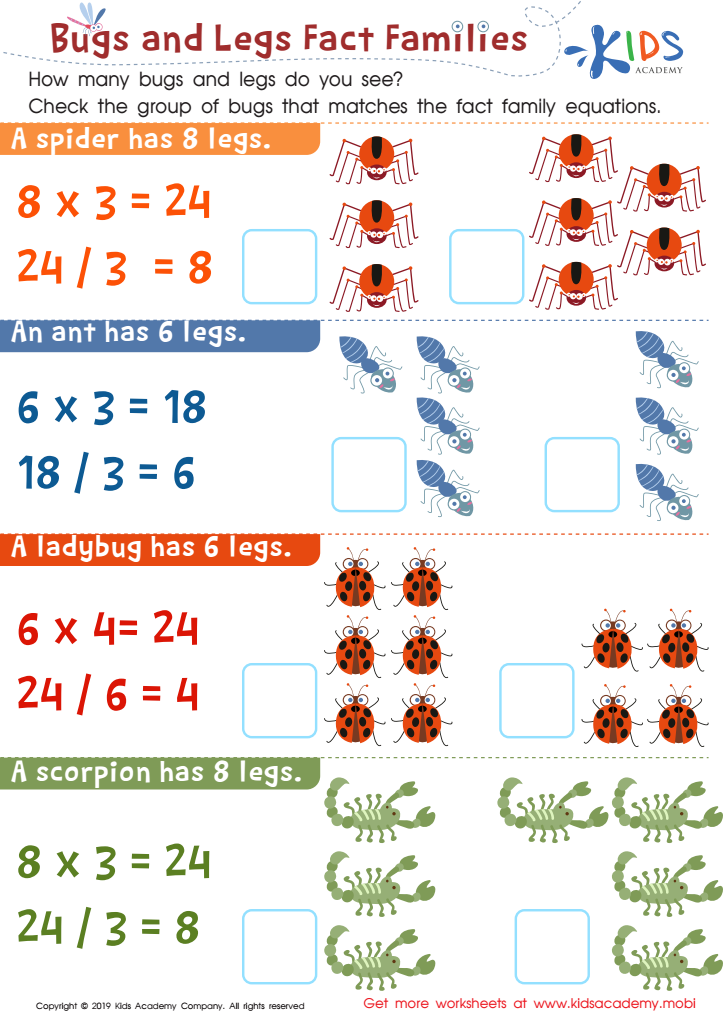Understanding fact families Normal Worksheets for Ages 7-9
5 filtered results
-
From - To
Explore our "Understanding Fact Families" worksheets for ages 7-9, designed to enhance your child's math skills. These engaging worksheets help young learners grasp the concept of fact families, reinforcing the relationship between addition and subtraction. They'll enjoy fun and interactive exercises that make learning enjoyable and effective. Our carefully curated resources cater to various skill levels, ensuring every student can build a strong mathematical foundation. Perfect for classroom or home use, these worksheets are essential for developing critical thinking and problem-solving skills in young minds. Empower your child’s learning journey with our valuable educational tools!


Fact Families — Add and Subtract Worksheet


Fact Families: Find Correct Family Worksheet


Bugs and Legs Fact Families Worksheet


Multiplication and Division Fact Families Assessment 1 Worksheet
Understanding fact families is crucial for children aged 7-9 as it forms a foundation for their math skills and fosters arithmetic fluency. Fact families are groups of related math facts using the same numbers. For example, if we're working with 3, 4, and 7, a fact family includes 3 + 4 = 7, 4 + 3 = 7, 7 - 4 = 3, and 7 - 3 = 4. Teaching kids these relationships enhances their conceptual understanding of addition and subtraction, moving beyond rote memorization.
Parents and teachers should care about this because it helps children recognize patterns and make connections between numbers, crucial for higher-level math skills. Understanding these relationships deepens their comprehension, making them confident and capable problem solvers. Moreover, familiarity with fact families supports mental math, equipping children to calculate more efficiently without relying on external aids like calculators.
Early mastery of these concepts also links to better performance in future subjects such as algebra, where recognizing relationships between numbers is essential. Ultimately, caring about fact families and ensuring children grasp them well means facilitating a smoother, more intuitive progression through their math education. This strong foundation is not just beneficial academically but also builds critical thinking skills applicable in everyday life.
 Assign to My Students
Assign to My Students
















